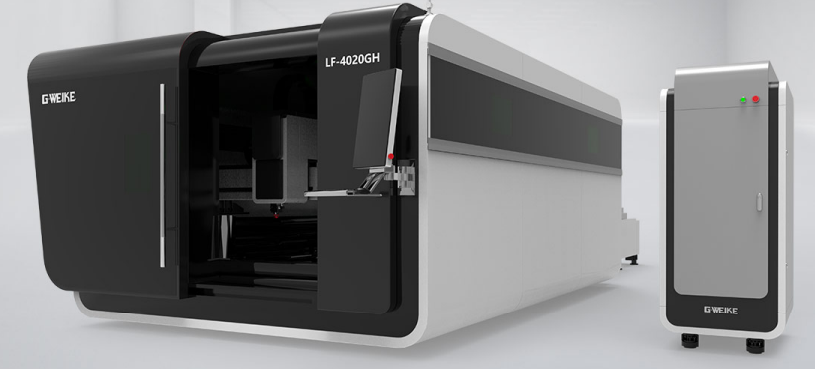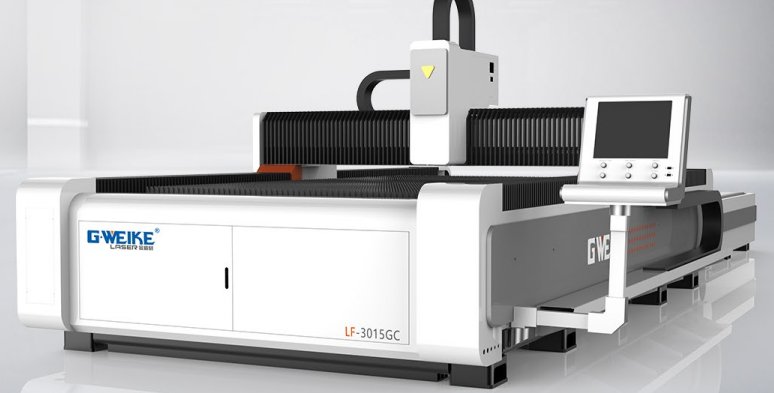The Complete Guide of Metal Laser Cutter
The Metal laser cutter has revolutionized manufacturing, with perfect cuts achieved in minutes or seconds.
It's an effective way to cut metal with high precision and efficiency.
And it can cut clean edges, although cutting different thicknesses and types of metal can present some challenges.
This article provides a complete guide to the metal laser cutter and discusses some of the challenges that may encounter during this process.
What is a metal laser cutter
A metal laser cutter is a type of CNC machine where a highly focused laser beam cuts metal with great precision, making it the first choice for cutting complex shapes and designs.
How does it work?
Almost all laser cutters work similarly. It all starts with the laser source.
The laser source produces a powerful beam of focused and redirected light. It passes through focusing and reflecting mirrors and converges into a narrow beam, which greatly increases the energy density of the laser.
When enough light is gathered together, powerful energy instantly penetrates the material. This also shows that only sufficiently powerful energy can penetrate materials.
How to use a metal laser cutter
Laser cutting metal usually produces a high-quality cut without secondary finishing processes.
However, many metals are reflective, so how do you overcome these challenges?
You need to set the optimum parameters to cut the metal.
Firstly prepare the design for laser cutting the metal. It is always recommended that the cutting element's thickness be greater than the workpiece's. This ensures the structural integrity of the design.
It also helps to reduce heat shadows in specific areas and prevents the metal from overheating.
Set the optimum parameters according to the type of metal so that the metal laser cutter can keep working well.
Laser Power
Power is one of the most important laser parameters of a metal laser cutter and determines the laser's ability to cut different materials.
The higher the power, the better the cutting ability of the laser.
If you want to cut metal sheets of more than 10mm, choose a cutting power of more than 1KW.
Cutting speed
The cutting speed of your Metal laser cutter determines your productivity. The faster the speed, the shorter the processing time and the higher the productivity.
Try to use high power and low speed when cutting thick metals.
Slowing down the cutting speed increases the dwell time of the laser, which increases the amount of energy absorbed by the metal and generates more heat to vaporize it.
Auxiliary Gases
The auxiliary gas plays a vital role in the laser cutting of metals. It protects the focusing lens from debris generated during cutting and facilitates good cutting results.
Auxiliary gases also help to increase productivity.
Common auxiliary gases are oxygen, nitrogen, and air.
Air is the cheapest of these auxiliary gases and generally protects the focusing lens, but it has no significant effect on the quality of the metal cut or the speed.
Oxygen accelerates the evaporation of the metal and can increase the cutting speed. However, oxygen is not recommended for metals highly susceptible to oxidative reactions with oxygen, as it can produce an oxide layer.
Nitrogen is good for providing the best cutting results and can be used with all metals, although it is more costly.
Exhaust system
The exhaust system deals with the fumes generated during the cutting process. Smoke generated during the cutting process can harm the operator's health and affect the cutting results.
Laser Focus
The laser focus affects the cutting results of the metal laser cutter. When cutting thick metals, you can set the laser focus at 1/3 of the thickness of the workpiece. This gives the best results.
Cutting Tests
Metal laser cutters have different parameters for cutting different metals. You should always test cuts on the same metal scrap before cutting the workpiece. A cutting test before cutting helps you understand the material's processing characteristics and find the optimum cutting power, speed, focus, etc. This also helps to reduce your production costs.
This also helps to reduce your production costs.
Advantages of a metal laser cutter
High quality of cut: The metal laser cutter is ideal for high-precision cutting of metal, as the laser cuts the workpiece without distortion, with a narrow kerf and no burrs on the edges of the cut.
Low heat: The heat-affected area is low and does not cause deformation in other metal sheet areas.
Fewer consumables: Laser cutting has a narrow kerf than other metal cutting methods, so there are fewer consumables in the cutting process.
Non-Contact Cutting: Laser cutting is a non-contact process, so there is no part loss during the cutting process. And fixtures do not need to hold the workpiece in place.
Fast speed: the metal laser cutter can achieve high-quality cuts quickly. High speed and high repeatability make laser cutting the processing technology of choice in the sheet metal industry and make it ideal for many large industries.
Cons of sheet metal laser cutting
The disadvantages of sheet metal laser cutting are as follows:
- The cut is not square but relies on a focused, collimated energy beam. This results in angled cuts, which have little effect on thin materials but may be important for thicker targets.
- The equipment is expensive, so you must make efforts to ensure that costs are reasonable. Auxiliary and maintenance costs can also be high.
- Some metals require inert gas assistance to blow the kerf clean in order to cut some metals effectively.
Challenges Facing Laser Cutting of Metal
Despite being one of the best metal cutting technologies, you must be wary of some of the challenges of laser cutting metal.
High initial cost
While laser cutting offers several advantages over traditional cutting processes, the high initial cost of the equipment limits its use in small-scale businesses.
Laser cutting of metals usually requires a fiber laser cutter, which is relatively more costly than CO (2) lasers.
Moreover, using auxiliary gases (oxygen or nitrogen) for laser cutting of metals further increases the cost of the equipment.
Reflective properties of metals
The reflective properties of metals result in the loss of laser energy in the form of a reflected laser beam.
Therefore, higher power lasers are required to cut metal workpieces.
It is important to note that covering the reflective surfaces of metals with masking tape does not prevent the laser from being reflected.
Workpiece Thickness
As the metal's thickness increases, the laser's ability to perform a clean cut decreases.
Best metal laser cutter
Gweike - GH series

This is a powerful metal laser cutter with an 8-20KW fiber laser capable of cutting and engraving metals of various thicknesses.
It is an ultra-high power industrial metal laser cutter with a working area of 4000mm*2000mm-12000mm*2500mm. Powerful laser modules make the GH series machines ideal for large-scale industries.
Equipped with a water chiller and monitoring system, it can predict any machine malfunction in advance.
LF3015GC

The LF-3015GC is another powerful laser cutter with power options ranging from 1-6KW and a working area of 3050*1530mm.
The narrow kerf width of approximately 0.001" makes it ideal for performing complex cuts with high precision.
It has a maximum cutting speed of 100m/min, positional accuracy of approximately ±0.03mm, and high repeatability (±0.02mm).
All these features, the powerful laser module, and the built-in cooling system make the GC series an excellent metal cutter for large industries.
Conclusion
The metal laser cutter makes complex and efficient cuts in sheet metal in a very short cycle time. It is one of the most efficient technologies for cutting metal.
In addition, it is fast cutting and highly productive, making it the preferred choice for many large sheet metal processing industries.

